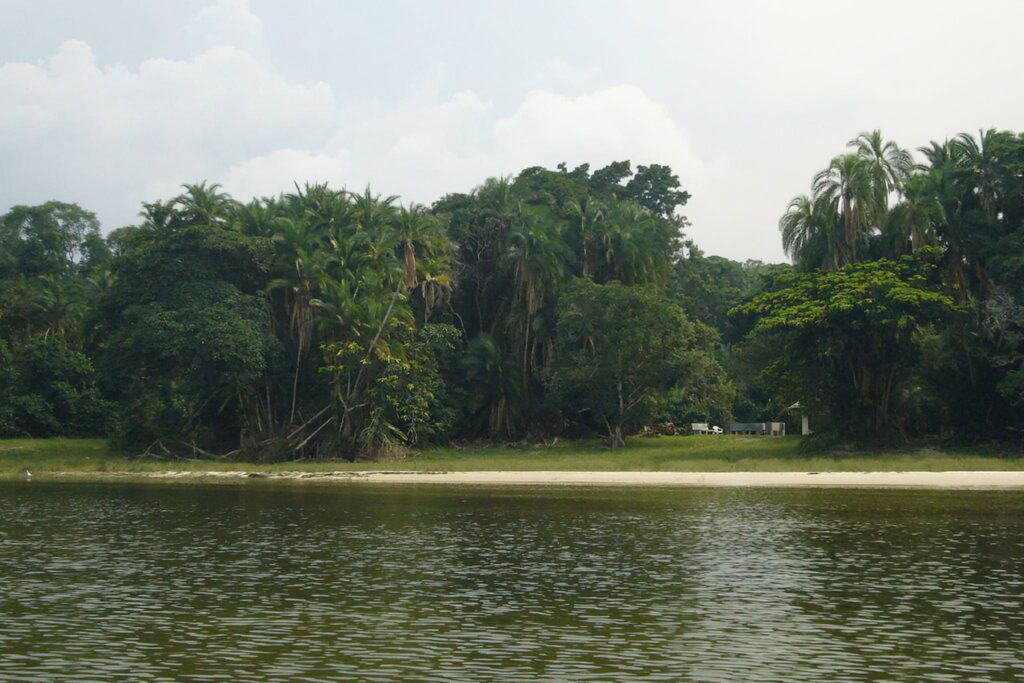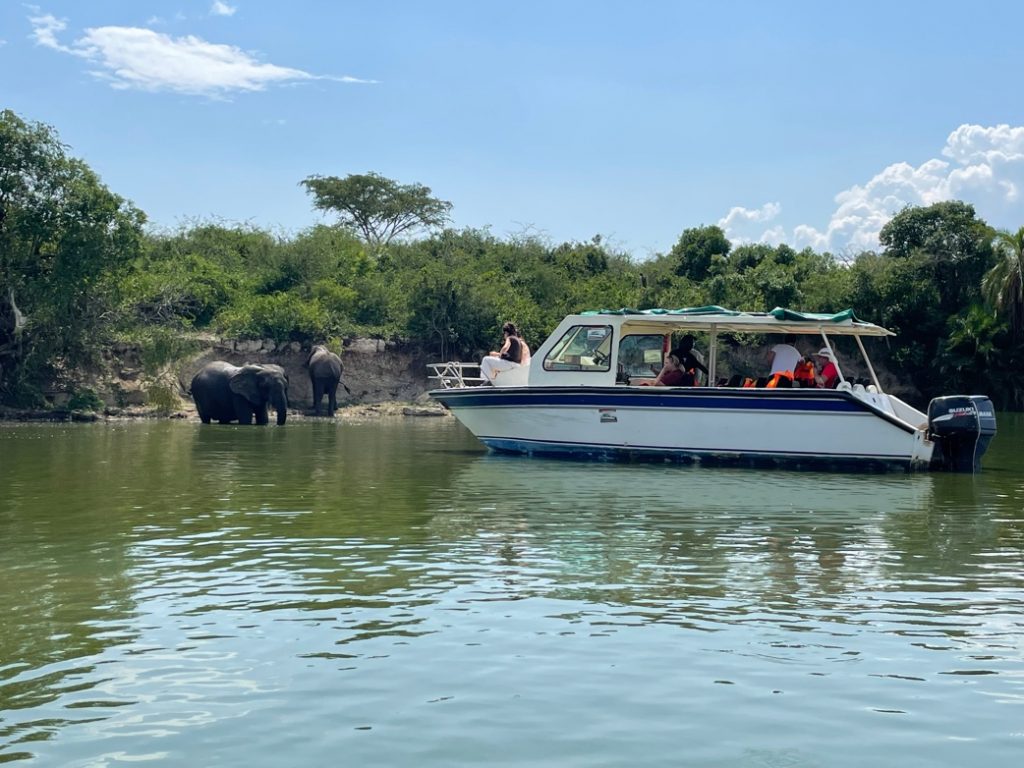Ngorongoro
The Ngorongoro Conservation Area is a UNESCO World Heritage Site located in Tanzania holding the biggest natural unbroken caldera on earth. It was designed in 1959 and spans vast swaths of pits, gorges, timberlands, lakes, waterways, streams, savanna plains, and woodlands. The breathtaking combination of scenery and wildlife rivals that of the nearby Serengeti and the Maasai Mara Public Hold. The award-winning film “Out of Africa” was partially shot in Ngorongoro. The Ngorongoro Conservation Region includes the well-known Ngorongoro Crater (from which the region gets its name), the Olduvai Crevasse, and the far-off pit of excellent nations.
The Ngorongoro Conservation Authority’s main attraction is the Ngorongoro Crater, the world’s biggest inactive, undamaged, and unfilled volcanic caldera. The crater, which was produced two to three million years ago by the fall of a massive volcano, is 610 meters (2,000 feet) deep and comprises 260 square kilometers (100 square miles) of land. The Ngorongoro Crater, Africa’s Garden of Eden, is home to 25,000 creatures, including ungulates, four of the Big Five, and other large mammals. It is an excellent location for viewing critically endangered creatures like black rhinos, golden cats, and wild dogs and a hunting action-packed environment.
viewing Time
The best part is that the animals are out in the open with nowhere to hide. As a result, you may see it one day. If you want, you can even take a little detour to Olduvai Gorge! When you think about it, you can see A LOT in just half a day. There are zebras, lions, elephants, wildebeests, and, if you’re lucky, black rhinos everywhere you look! So, if you’re on a tight schedule, it’d be extremely easy (and prudent) to fit the Ngorongoro Crater safari into your agenda.
Ngorongoro Crater’s magnificent environment, paired with its extraordinary concentration of species, is one of the world’s greatest natural wonders. Wildebeest numbers are spectacular (far over a million). Spectacular wildebeest numbers (far over one million animals) travel through the property as part of the annual migration of wildebeest across the Serengeti ecosystem to calve on the short grasses straddling the Conservation Area, a genuinely awe natural event to witness.
How to get to Conservation Area
The wildlife sanctuary is located on the northern Tanzania safari circuit, roughly 153 kilometers west of Arusha, Tanzania’s main tourist town. The Ngorongoro Conservation Reserve, a one-of-a-kind safari destination in Tanzania, is part of the beautiful Serengeti ecosystem, and the Ndutu region connects the reserve with the southern portions of the Serengeti National Park. The Serengeti National Park is bordered by the Ngorongoro Conservation Area. The Ngorongoro Conservation Area is 50 km from Lake Manyara National Park, 139 km from Tarangire National Park, and 213 km from Arusha National Park.
Road transportation
The road from Arusha to the Lodore entrance gate is 160 kilometers long and the entire route is now paved and takes roughly 3.5 to 4 hours to drive. Unless you stay on the major gravel routes, a four-wheel-drive vehicle is required to enter the Ngorongoro Conservation Area and Serengeti National Park. Travel from Nairobi to Ngorongoro takes approximately 7-8 hours and covers a distance of more than 400 kilometers. Driving alone might be exhausting, and you’ll have to look for gas stations. A better option would be to fly into Nairobi and then connect with a local airline to Arusha. Arusha Airport (ARK) is a small airport, although it is the closest to Ngorongoro Crater. It is accessible by regional jet from one of the closest international airports.
The distance between Arusha airport and Ngorongoro Crater is approximately 170 kilometers. It’s about a three-hour drive. Be advised that the roads are in poor condition and that you may encounter gravel.
Using an airplane
You must fly to Kilimanjaro International Airport in Moshi, which is located at the base of Mount Kilimanjaro. From there, charter planes, taxis, and free shuttle services are available. The distance between Moshi and Arusha is approximately 55 kilometers. You will arrive at Arusha, the gateway to the Northern Safari Circuit, about one hour from the airport.
Descend into the crater. The main route to the crater is the Senate Drop Road, which enters the crater from the west. To get out, take the Lelai Ascent Road, which starts south of Lake Magadi and leads to the rim near the park headquarters. Lemala Strait is located on the northeast side of the crater near Ngorongoro Sopa Lodge and is used for both ascent and descent.
Fly to Zanzibar
if you want to combine a safari adventure with a beach getaway. Get to Ngorongoro Crater, Tanzania is well known for its Serengeti National Park, and good reason. But something is moving in the air as Ngorongoro falls into the crater, your hair is standing on end. The wildlife interactions here will shuffle around you, so expect your head to bobble from the first minute to the end. The crater’s confined nature effectively creates its environment. Ngorongoro Crater and the surrounding reserve are easily reached by plane or vehicle.
Best time to go
Wildlife can be seen at any time of the year in the Ngorongoro Crater, but May to October is drier and less grassy, allowing wildlife to be closer.
Business hours
The gates open at 6 am and descend at 4 pm. All vehicles must leave the crater by 6 pm. officially, you can stay in the crater for up to six hours, but this is rarely enforced. Self-drivers must hire a park ranger for the crater ($23.60 per vehicle). Please note that this rule is now more strictly enforced than before. No one perishes and leaves you behind. All fees are for a single 24-hour entry.
To properly enjoy this wonderful region, we recommend planning a vacation that begins in Arusha, Nairobi, or Entebbe-Uganda this way; you will be able to discover the best of it! Another approach to making the most of your trip to the area is to include an overland excursion in your itinerary. This allows you to blend animal viewing with culture and scenery.
Activities in the Conservation Area
Ngorongoro Conservation Area in Tanzania is home to some of the world’s most diverse wildlife and cultural heritage. True adventurers must visit this wonderful place. The Ngorongoro Crater, the world’s biggest complete crater, is the principal attraction of Tanzania’s Ngorongoro Conservation Area. The Ngorongoro Crater is a spectacular natural phenomenon, measuring approximately 20 kilometers in diameter, 600 meters in depth, and covering an area of 300 square kilometers. Some suggest that it was taller before erupting than Mount Kilimanjaro, Africa’s highest peak. Tourists may do a lot in the Ngorongoro Crater. Despite being one of the world’s few calderas, Ngorongoro is unique in that it is the world’s largest entirely intact caldera that has not yet transformed into a lake.
Game drives
A safari to Ngorongoro is highly recommended because it is one of the most likely sites in Tanzania to witness the endangered black rhino surviving in this gorgeous and protected environment. It is now one of the few remaining sites where it can breed in the wild. You’ll get another chance to see leopards and magnificent black-manned lions. Many flamingos are also drawn to Lake Magadi’s soda water. It is now one of the few remaining sites where it can breed in the wild.
The crater wall is 600 meters high
Visitors are driven down into the crater through a series of zigzagging roadways. This ride is exhilarating in and of itself, with its hairpin twists. When you approach the crater floor, you can see the many species that were too small to see from the rim. Your safari guide will take you on a tour of the crater’s numerous regions, including Lake Magadi and Lerai Forest. Aside from the Big 5, watch for wildebeests, zebras, elands, Thomson’s and Grant’s gazelles, hippos, flamingos, baboons, jackals, and hyenas.
While visitors are not permitted to trek into the Ngorongoro Crater, they are permitted to take guided excursions along the crater wall. The upper rim is densely forested, with tropical trees, shrubs, and creepers growing in abundance. The rim is a stunning area of the crater, teeming with birds and other species, including the occasional leopard. You might spot a martial eagle, olive sunbirds, cinnamon-chested bee-eaters, European rollers, and many others.
Olduvai Gorge & Migratory Sand land Tour
Olduvai Gorge is a 48-kilometer-long gorge located just north of the Ngorongoro Conservation Area’s south-northeast-west route. Ngorongoro Crater is only about a half-hour drive from the Serengeti, making it an ideal location for exercise and exploration.
Bird watching
Your avian companion has arrived! This caldera is home to 500 different bird species. You name it; ostriches, Congo gooses, secretary birds, etc. Visit between November and April to see the many migrating birds that reside here.
The Masai village
The Ngorongoro Conservation Area was established in part to conserve the Maasai ecosystem, which had been repurposed from the Serengeti Plains. They are nomadic by nature, erecting temporary communities in the form of circular houses known as bomas. We now have the option to visit some of these, which are open to tourists. You can observe how the huts are erected in a tight order based on the wives’ chronology and how they rely on the warmth and energy of the fire. The Masai have lived in what is now the Ngorongoro Conservation Area for centuries. They have a very distinct culture steeped in tradition because they have resisted changing their culture. In contrast to the Maasai, who live further east and have adopted a certain Western way of life, the NCA Maasai live a very traditional way of life.
Photography
Photographers are recommended to bring essential video and photography equipment. Because all off-road driving is restricted in this location, a camera with a telephoto lens is advised. Because of the dusty environment, it is advised that you bring safety equipment such as a dust mask. evening and morning hours are the most recommended photography recommended times. It is strictly forbidden to photograph Maasai people along the road. This is permitted at approved sites such as cultural bomas. Bring a couple of devices with fully charged batteries and lots of storage space. Tanzania is well known for its Serengeti National Park, and good reason. But something is moving in the air as Ngorongoro falls into the crater.
Safari on and around Lake Ndutu
The Serengeti National Park shares the Ngorongoro Conservation Area’s northern border. The two protected areas share an environment and are not separated by a fence. In reality, the only barrier is a gravel road. As a result, many of the wildebeests, zebras, and antelopes that make up the Great Wildlife Migration migrate to the northern area of NCA surrounding Lake Ndutu in the summer to feed on its nutrient-rich grasses. It’s a must-visit area during the calving season of January to march as the wild roars with all predators following these grazers.






